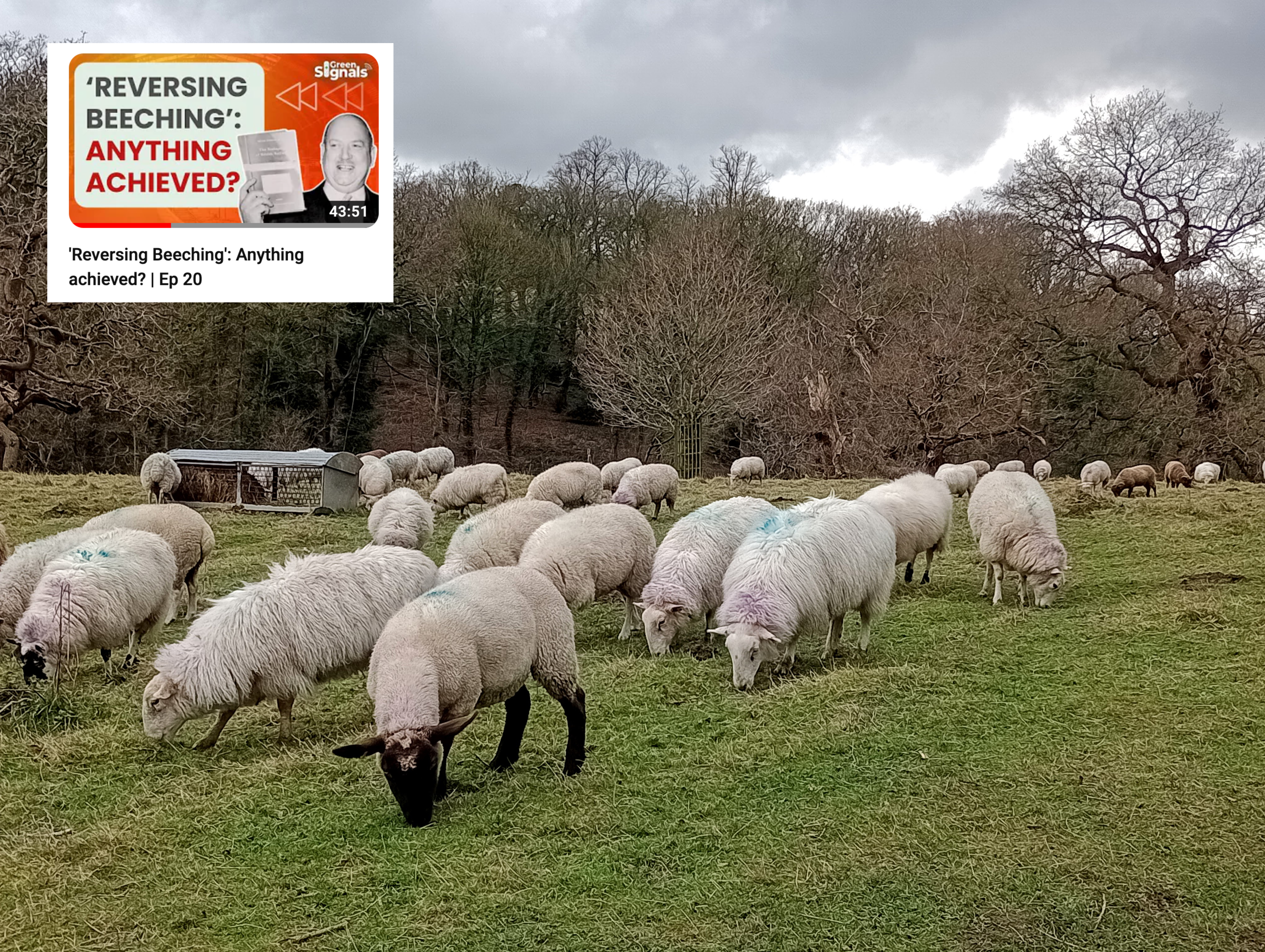Note to readers: if you haven’t yet come across the excellent Green Signals podcast the relevant episode is here: ‘Reversing Beeching’:Anything achieved?
Thank you to Nigel Harris and Richard Bowker for another interesting podcast. We heard that reinstating railways is expensive, and that Richard is doubtful that they make sense when they cover territories populated mainly by sheep.
Your favourite reinstatement, the Peaks and Dales line, is very far from serving two people and multiple sheep. Although more sparsely populated along the thirteen miles which would need to be reinstated, very large urban populations live at either end of the line (Manchester to the north, Derby (and Leicester and Nottingham, and Birmingham and London) to the south).
There are about 26 million trips a year to the Peak District National Park, mostly by day visitors, and about 95% of trips are made by car. Bakewell is the only town within the Peak Park, and is a honeypot attraction for visitors, which means traffic chaos on weekends, school holidays and market days. Buses are usually suggested as the answer, but buses alone will not work. Buses get stuck in traffic too, and there is no space on narrow Peak District roads to put in bus lanes. We know our public transport doesn’t work at the moment – that’s why everybody drives.
A recent study by the University of Derby into the problems experienced by rural Peak District businesses when trying to recruit and retain skilled staff found one of the challenges was poor public transport combined with the cost of owning a car. People simply cannot get to work. And with an increasingly aged population in the Derbyshire Dales, the pool of young people available to work is getting smaller. How do we continue to service the cafes and gift shops and take tickets at Chatsworth for all those visitors? What’s the future for the Peak District National Park visitor experience if the cafes and attractions are all understaffed, the traffic queues never-ending and the parking oversubscribed?
And what’s the effect on residents of the Peak District if we don’t improve things? Reliable and affordable public transport changes lives, and brings the benefits which Richard was struggling to understand in the podcast. Here are a few real-life examples based on the buses and trains we do have at the moment. An 85-year-old from Chesterfield takes the bus to attend a regular writing group in Bakewell. A mother from Blackpool makes monthly visits to her daughter in Matlock, taking the train to Buxton and then catching a bus. A student from Buxton goes to Lady Manners School in Bakewell, and travels by bus, but must get a lift if he stays late for after school classes. Two teenagers from Manchester use the Hope Valley Line to visit their grandmother in Hathersage. A Derby university student living with his parents in Baslow travels to Chesterfield to catch the train to Derby.
What are the benefits from these? The NHS notes that older people are particularly vulnerable to loneliness. The health impacts of loneliness are dire. Enabling families to keep in touch and allowing older people to engage in regular activities with friends improves well-being and saves the NHS money. Using public transport boosts physical activity for all ages of people, contributing towards maintaining a healthy weight and reducing the risk of cardiovascular disease, type 2 diabetes, cancer and depression. Again, more benefits for the NHS. Young people who are able to access education and qualifications can go on to become scientists, entrepreneurs, plumbers, concert pianists, or anything else they want, becoming future taxpayers and possibly solving the next pandemic.
So why reinstate the Peaks and Dales line? As discussed, buses alone will not do it in the Peak District. They get stuck in traffic too, playing havoc with reliability. Road travel in the Peak District is slow. Visitors, especially day visitors, are not going to endure lengthy bus rides just to get into the Park. Most buses don’t run at night. Incredibly, it’s impossible to get back from Buxton, with its Opera House, International Festival, Fringe Festival and Gilbert and Sullivan Festival, towards Bakewell, Matlock or Derby after the last Transpeak bus leaves at 6.08pm. At the moment it’s hard to get around in the Peak District without a car, and if you don’t have one you can’t do a lot of things.
We need integrated and reliable public transport throughout the Peak District, if we are going to safeguard the National Park for future generations, preserve the visitor experience and improve the health and wellbeing of visitors and residents. Two train lines, the Hope Valley Line connecting Sheffield and Manchester, and the Peaks and Dales line, connecting Derby (and Birmingham and London) with Manchester, supported by a robust bus network and active travel infrastructure, would allow people to travel to the Peak District, and move around it, without needing a car. This would mean everybody would be able to visit the National Park and enjoy the things that are currently only accessible to those affluent enough to maintain and physically able to operate a car.
Will the Peaks and Dales line cost a lot? Yes. Should we reinstate it? Yes. After all, what’s the cost if we don’t?
